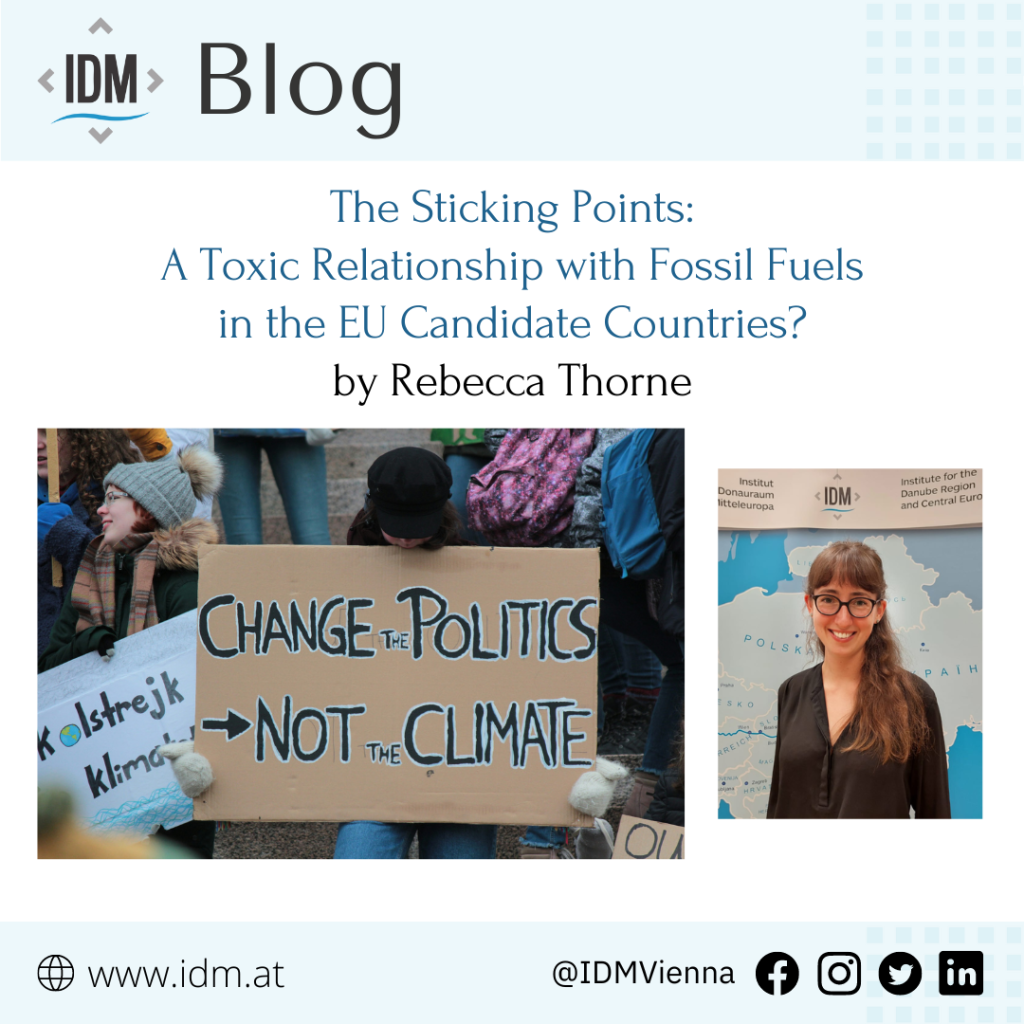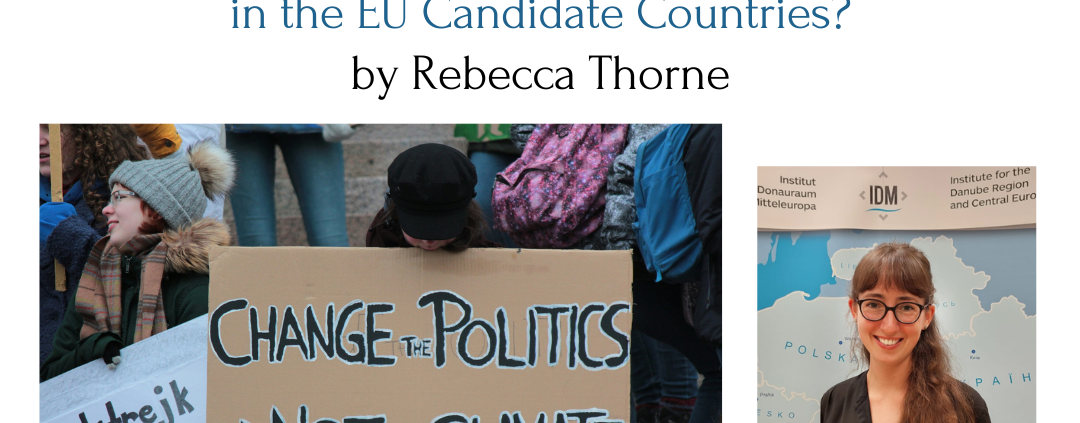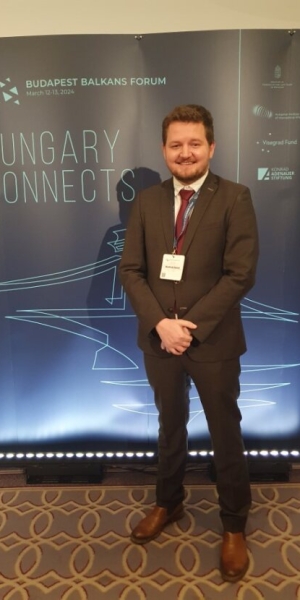The Sticking Points: A Toxic Relationship with Fossil Fuels in the EU Candidate Countries?

By Rebecca Thorne (IDM)
At the beginning of February, the European Commission backed a plan for a 90% reduction in emissions by 2040. This is intended as a stepping stone towards the already existing goal of climate neutrality in Europe by 2050. The plan will affect not only the EU member states, but also the countries hoping to join the club in the future as they gradually align their policies with EU rules. These countries are among the most vulnerable in Europe to the effects of climate change, despite lower-than-average emissions and high rates of energy poverty. Yet economic development is too often related to fossil fuel consumption.
In view of their geographical, economic, and political situations, the Western Balkans, Moldova and Ukraine face specific challenges in transitioning away from fossil fuels. Except for Albania, the region has inherited energy infrastructure from its respective Yugoslav and Soviet legacies that favoured imports from Russia, with the energy sectors themselves remaining largely state-owned. Furthermore, the Western Balkans also face the specific challenge that much of their energy infrastructure was damaged during Yugoslavia’s wars. In Ukraine, this damage is today an ongoing reality. To accelerate the reforms that would ensure affordable, sustainable and secure energy, the region has subscribed to the Energy Community Treaty, which aims to establish an integrated regional energy market compatible with the EU.
The first step in the transition is to phase out coal. Both the Western Balkans and Ukraine continue to mine and generate power from lignite, with Kosovo depending on coal for as much as 95% of its power generation. In addition to emitting carbon dioxide, coal power plants release sulphur dioxide: in the Western Balkans, these emissions breach Energy Community Treaty limits and are responsible for severe health problems and premature deaths. North Macedonia has now pledged to phase out coal by 2027, yet Bosnia and Herzegovina, Serbia, and Kosovo have not made such a commitment. Moreover, in their draft updated national energy and climate plans (NECP), all three countries fail to adequately consider the steps required for a just transition, such as a re-skilling of the workforce and the creation of new green jobs.
Crude oil, too, is still widely used in the EU neighbourhood, especially in the form of diesel and petrol for transport, but also in plastics, clothing, fertilizers and pharmaceuticals. Oil’s share of the total energy supply ranged from 17% in Ukraine (2021) to almost half in Albania (2022). While there are oil terminals and/or refineries in Albania, Montenegro, Serbia and Ukraine, there is very limited oil extraction in the region, which means the reliance on imports makes the economies vulnerable to price fluctuation and geopolitical security issues. Nonetheless, it is worth noting that even before Russia’s full-scale invasion of Ukraine, only 3% of oil and oil products came from Russia.
Gas is widely considered to be a transition fuel in the process of phasing out fossil fuels, with the effective labelling of “natural gas” encouraging the perception that it is not as harmful as other fossil fuels. While it emits less carbon on combustion compared to coal, its distribution nonetheless releases the potent greenhouse gas methane. The International Energy Agency recognizes the limited role that gas can play in the transition process, asserting in their latest Net Zero Roadmap that no new coal, oil or gas projects are needed.
Yet the EU and the US are still backing new gas infrastructure projects in the EU neighbourhood. The motivation to build new pipelines stems in part from the geopolitical objective to reduce dependency on Russian imports and instead source fuel from elsewhere. As part of this strategy, the initiative REPowerEU has provided financial investment for new LNG terminals as well as oil and gas pipelines. Notably, Moldova is no longer receiving any gas from Russia due to the new Iasi-Ungheni pipeline, which connects Romania and Moldova. The EU and the US are now encouraging the construction of a pipeline between Croatia and Bosnia and Herzegovina to diversify the latter’s gas supply, which is currently only receiving Russian gas via the TurkStream pipeline in Serbia. However, Bosnia and Herzegovina, like most of the Western Balkans, already uses so little gas that it would be counter-productive to increase its dependency when Europe has simultaneously committed to do the exact opposite. Moreover, this infrastructure is designed to last decades, long beyond the point when Europe plans to be entirely carbon neutral.
Critical to the persistence of the fossil fuel industry are the available finances, with many European banks as well as EU initiatives still funding new and existing oil and gas projects. As these international financial institutions are among the biggest lenders to energy companies, their continued monetary support for the extraction, processing, storage and distribution of fossil fuels is a major obstacle to the green transition. Moreover, the economies of Bosnia and Herzegovina, Serbia, and Ukraine, which all have high-energy industries such as the production of aluminium, steel, and fertilizers are especially vulnerable to the temptation of maintaining market dynamics by continuing to use fossil fuels.
To redirect the flow of investments, it is crucial that national governments in the Western Balkans, Moldova and Ukraine reduce financial uncertainty by fostering trust and setting clear climate policy signals. Likewise, allowing independent scientific research can guide climate change mitigation efforts. Yet corrupt and autocratic leaders are often reluctant to regulate the fossil fuel industry, reduce greenhouse gas emissions or invest in renewable energy because their pockets are being lined and their political careers bolstered by profits in the industry, as well as by foreign investors from countries such as China. With upcoming elections across the Danube region, voters must therefore use their democratic rights to push back against the rising trend of authoritarianism and urge governments to prioritise the climate.
Likewise, policies and decisions made at EU level play a key role in the speed of the energy transition across Europe, meaning that poor decision-making at institutional level could take the EU candidate countries along the wrong trajectory and increase their dependency on fossil fuels rather than decreasing it. Yet high-level support for green policies that would reduce the consumption of fossil energy is wavering. While the president of the European Commission Ursula von der Leyen has been championing the green transition, she has been facing opposition from her party members, who oppose a ban on combustion engines and are wary of farmers’ discontent if CO2 emissions are taxed. Ahead of the EU elections in June 2024, European parties across the board are trying to win public favour by speaking out against climate-friendly policies that may initially cost the consumer more. Even von der Leyen is gradually giving in to electoral pressure, putting not only the Green Deal, but also her green legacy on the line for the sake of a second term. The next presidency will decide how seriously the EU institutions will take the fight against climate change.
In Europe’s energy transition, it’s not just oil that is sticky. Transitioning away from coal and gas will be challenging, requiring clear policies at national and EU level, comprehensive legislation, and responsible investments. If Europe wants to achieve a 90% reduction in emissions by 2040, the money that is currently being invested in fossil fuels should be better invested in improving energy efficiency and developing renewable energy, with national and international oil and gas companies as well as financial institutions urged to join the race in speeding up the transition. In doing so, the economic development and integration of the EU’s candidate countries can be accompanied and supported by clean and sustainable energy.
You may be also interested in



